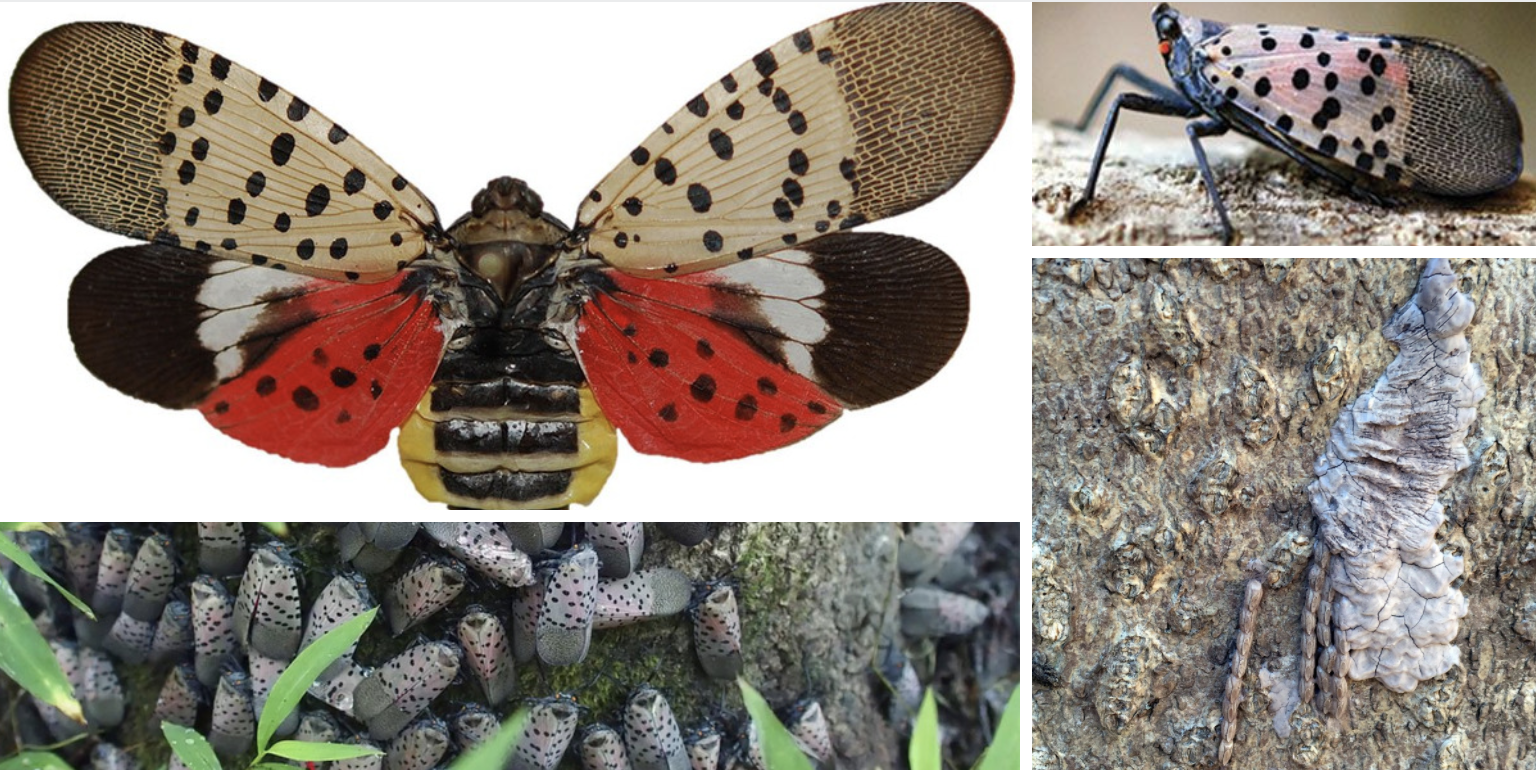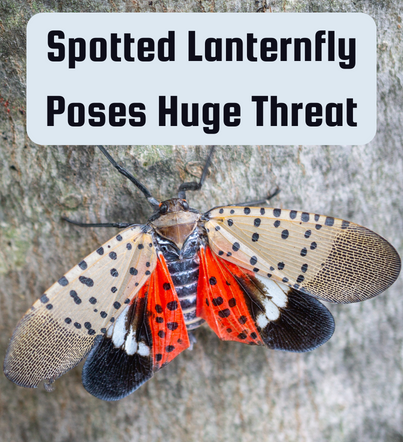
Native to Asia, this sap-sucking insect was found for the first time in New York State on November 29, 2017. These insects change their appearance with each life stage, but adults are about 1 inch long. Their outer wings are a muted gray color with black spots, very inconspicuous until they hop or fly and expose their bright reddish/orange inner wings. While their wings are their main distinguishing feature, the lanternfly is actually more likely to hop from surface to surface as opposed to fly.
Why is the Spotted Lanternfly so dangerous?
- They have a very powerful ability to reproduce in mass quantities. Females lay between 30-50 eggs at a time, in what looks like a disgusting gray goop. With an average of two hatches per season, that means each female is creating roughly 100 new spotted lantern flies each year!
- They are not picky about their host. While their preferred host plant is the Ailanthus altissima, (Which is an invasive itself known as the tree of heaven) they will also feed on over 70 other plant species including grapes, hops and fruit trees. Not only can they hop around easily, they pose a threat to a variety of different industries.
- As they suck the sap of a plant's stems, leaves or trunk, they excrete a sweet honeydew secretion that coats the host plant and is a catalyst for the growth of sooty mold.
- There are no known predators. Birds do not seem to like to eat them and no other predator has been identified, keeping their population relatively stable for the time being.
The USDA has recognized the serious threat that this insect poses, and in February 2018, they announced their commitment of $17.5 million to stop the spread of the Spotted Lanternfly.
What can you do to help?
- Avoid quarantined areas where the insect has been spotted. Eggs are very easily transported on wood, plants, nursery stock, cars, furniture, and waste.
- If you see a Spotted Lanternfly in an area where it's not known to exist, try and capture it in a closed container and report it to the Department of agriculture.
- Regularly check known host plants, like Ailanthus altissima trees, for egg masses and actual insects. Dusk is the perfect time to do this, because they tend to cluster on trunks of their host trees around this time.
For more information on the Spotted Lanternfly, read the USDA’s fact sheet, aphis.usda.gov/publications/plant_health/2014/alert_spotted_lanternfly.pdf.










